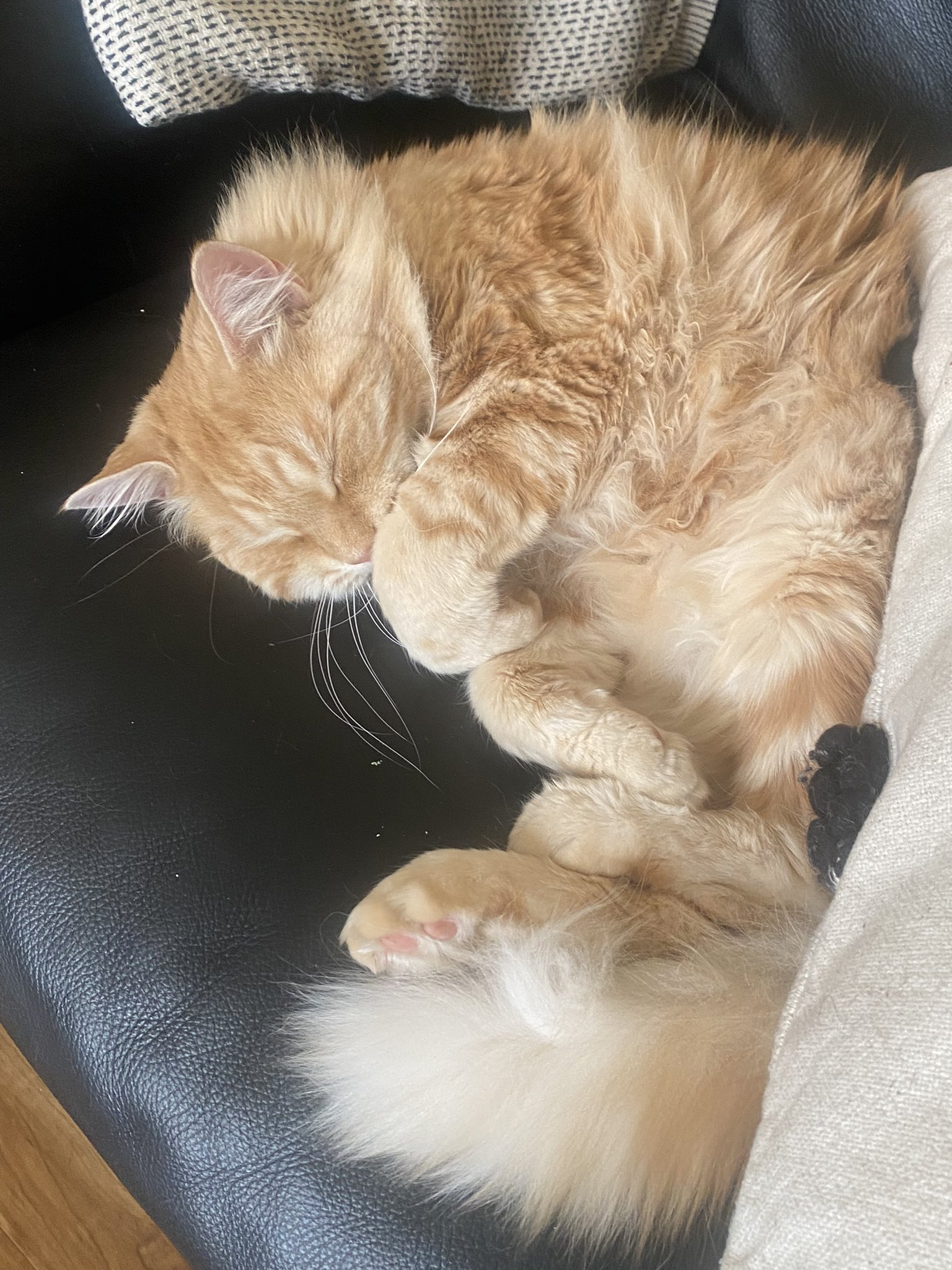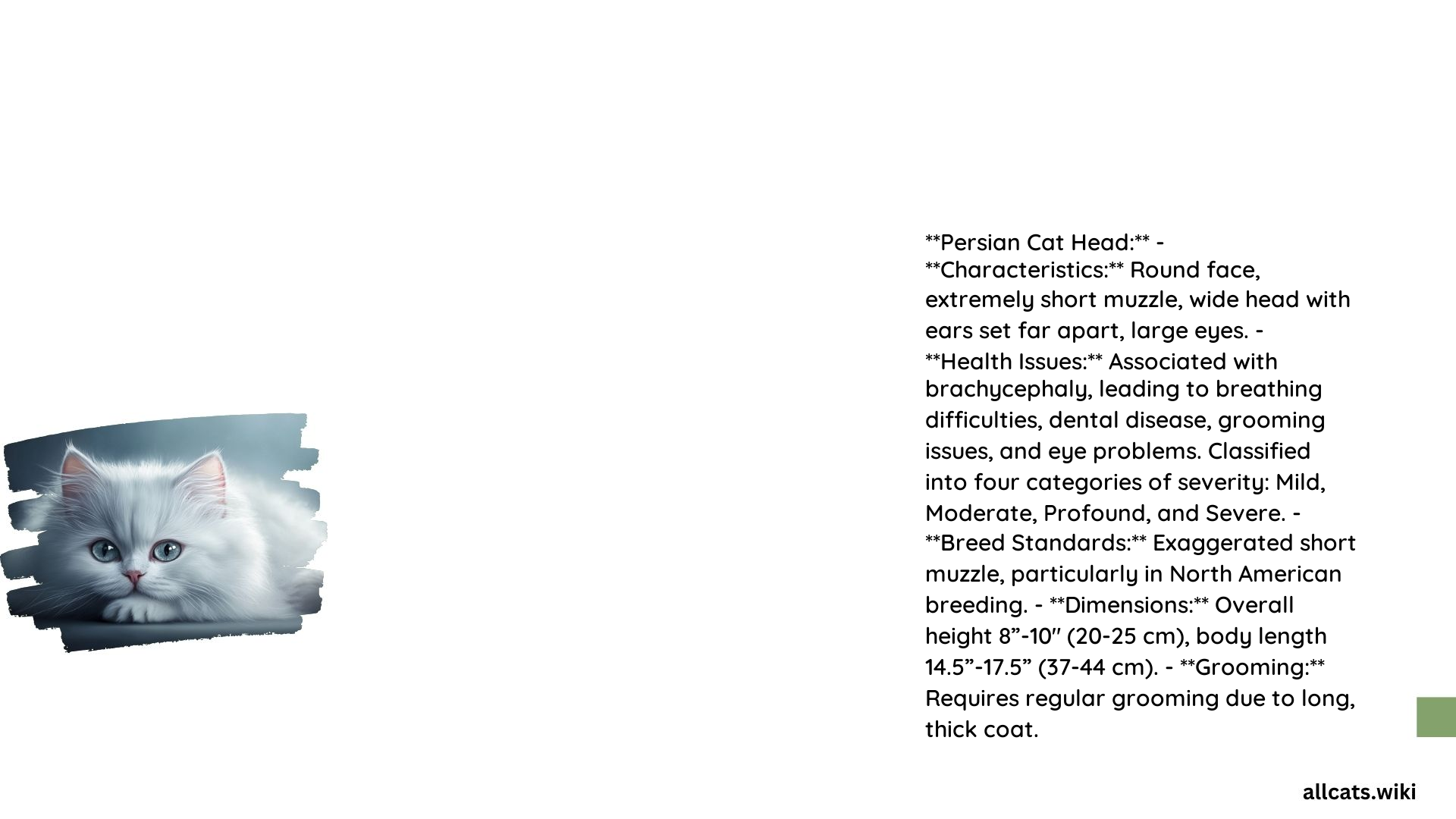What are the Key Features of a Persian Cat’s Head?

The Persian cat is known for its distinctive head shape and facial features. Some of the key features of a Persian cat’s head include:
-
Head Shape and Size: Persian cats are characterized by a round face and short muzzle. The breed standard emphasizes a rounded head, large, wide-spaced round eyes, and a short, cobby body.
-
Facial Structure: There are two main types of Persian cats based on their facial structure:
- Traditional or Doll-Face Persians: These cats have a more pronounced muzzle compared to the modern peke-faced Persians.
- Peke-Face or Ultra-Typed Persians: These cats have an extremely shortened muzzle, often leading to a flat face.
How Does the Brachycephalic Head Morphology Affect the Health of Persian Cats?

The brachycephalic (short-faced) head morphology of Persian cats can lead to several health issues:
-
Respiratory Issues: Brachycephalic airway obstruction syndrome (BAOS) is common in Persian cats, particularly those with more extreme brachycephaly. This condition can cause breathing difficulties, discomfort, distress, and a reduced quality of life.
-
Other Health Concerns:
- Dental Problems: The abnormal jaw structure can lead to dental issues such as maxillary dorsorotation and brachygnathism, causing discomfort and pain.
- Eye Problems: Brachycephalic cats are prone to eye issues like epiphora (tears running onto the face), exophthalmos (eyeball protrusion), and corneal ulcers or sequestra, which can cause pain and discomfort.
- Grooming Difficulties: The facial structure can make grooming challenging, leading to skin irritation and infections.
What are the Distinct Differences Between Peke-Face and Doll-Face Persian Cats?
- Head Shape:
- Peke-Face Persians: Have an extremely flat face with a very short muzzle, often leading to a vertical alignment of the forehead, nose, and chin.
-
Doll-Face Persians: Have a more pronounced muzzle and a less extreme head shape, resembling the traditional Persian cat.
-
Eye Size and Facial Features:
- Peke-Face Persians: Typically have larger, more prominent eyes due to the flat face, which can increase the risk of eye problems like exophthalmos and corneal ulcers.
-
Doll-Face Persians: Have eyes that are still large and round but are less prone to the severe eye issues associated with the peke-faced type.
-
Health Implications:
- Peke-Face Persians: Are more likely to suffer from severe health issues such as BAOS, dental problems, and eye issues due to their extreme brachycephaly.
- Doll-Face Persians: Generally have fewer health issues related to their head shape, although they can still experience some health problems due to their brachycephalic nature.
What are the Measurements and Statistics Related to Persian Cat Head Morphology?
- Cranial Index: Studies have shown that peke-face Persians have a higher cranial index (0.97 ± 0.14) compared to doll-face Persians (0.29 ± 0.08), indicating a more severe degree of brachycephaly.
- Nasal Bone Length: Peke-face Persians have a significantly lower relative nasal bone length (0.15 ± 0.04) compared to doll-face Persians (0.29 ± 0.08).
- Health Impact: The more extreme the degree of brachycephaly, the greater the risk of health and welfare problems, including respiratory issues, dental problems, and eye issues.
References:
